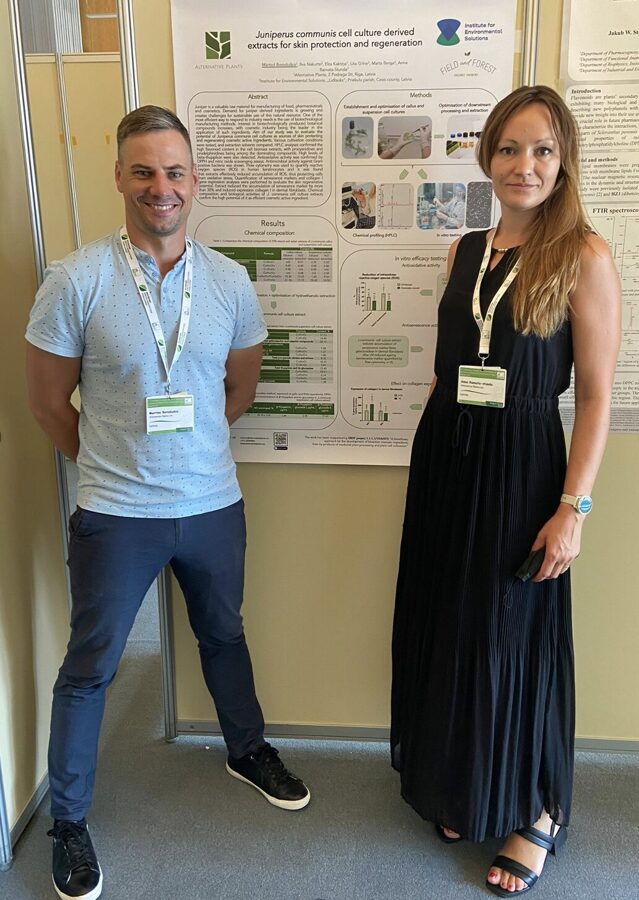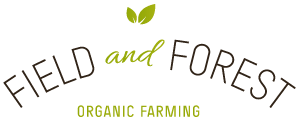Developing cosmetic ingredient formulas from SIA “Field and Forest” extraction by-products
For a year already, Northern Europe’s leading cosmetic and
medicinal plant farming experts SIA “Field and Forest” have been
cooperating with the researchers of Institute for Environmental
Solutions and natural cosmetics raw material producer SIA “Alternative
plants”. The aim is to use secondary products derived from a production
process for developing new value-added products for cosmetics industry.
High amounts of by-products are generated while processing medicinal and aromatic plants. SIA “Field and Forest” and “Alternative plants” have turned to IES researchers in order to estimate what active ingredients and in what concentrations can be found in these by-products. Additionally, the best extracting methods for these ingredients are determined. During this research, SIA “Alternative Plants” is not only a supplier of plant tissue cultivation (in vitro) by-products. The company has a great deal of experience in producing natural cosmetics ingredients. Therefore, researchers of SIA “Alternative plants” carry out the analysis of newly acquired extracts – safety tests and effect evaluation on human skin cells.
Researchers of SIA
“Alternative Plants” Anna
Ramata-Stunda and Mārtiņš Borodušķis reveal the course of study and present the first results.

SIA “Alternative Plants” researchers Anna Ramata-Stunda un Mārtiņš Borodušķis. Photo: Institute for Environmental Solutions
Plant cultivation in vitro – what does it mean? And why do you use this technology for cosmetic ingredient production?
Mārtiņš Borodušķis (M.B.): In vitro or plant cell cultivation is a technology for growing plant biomass. With the help of this technology, we obtain the ingredients cosmetic industry is interested in without growing the plant. All stages of the process take place in the laboratory. The first step is collecting the plants or specific parts of the plant. Then, we derive stem cells from the plant and use the cells to grow biomass. The biggest advantage of the method is the concentration of active ingredient in the plant biomass being considerably higher than concentration in the same plant grown in nature. In the laboratory, we can provide controlled environment – ruling out the influence of seasonal change, weather and external pollution.
Why does SIA “Alternative Plants” participate in this research?
Anna Ramata-Stunda (A.R.S.): We have always emphasized that we aim to work efficiently and responsibly towards natural resources. To produce cosmetic ingredients, we cultivate plant biomass and extract specific active ingredients. The remaining biomass still holds large concentrations of active compounds. We understood that by cooperating with IES researchers, we could develop new products from it – therefore making the production process two times more efficient!
What is the potential use of the extracts and active compounds, derived from the SIA “Field and Forest” essential oil production and SIA “Alternative Plants” plant cell biomass cultivation by-products?
A.R.S.: During the research, we assess chamomile (Matricaria)
essential oil and by-products of three medicinal plants’ (Northern
dragonhead (Dracocephalum), gooseberry (Ribes) and juniper (Juniperus))
biomass cultivation process. From each of the by-products’ group IES
researchers derive extracts. During the extraction process,
researchers experiment with different reagents, temperatures and other
variables. As the result, we obtain extracts with diverse active
compounds in varying concentrations. We evaluate how these extracts
react on human skin cells. This way we determine where the extracts
could potentially be used and what cosmetic ingredient prototypes could
be created.
How do you determine the cosmetic properties of the extracts and active ingredients, derived from the assessed by-product groups?
A.R.S.: We use biochemical tests on skin cell cultures. We evaluate how the extracts perform, determine whether they protect from UV exposure, stimulate skin cell division or boost collagen production. We also evaluate antimicrobial activity – whether the extract can suppress bacterial growth. Another important factor we estimate is the anti-inflammatory effect, which can prevent skin ageing and UV exposure induced inflammation. As we test the extracts, we try to identify their potential uses in cosmetic ingredient production industry.
M.B.: Not
only it is important to understand how the product works but also
whether it’s safe. That’s why safety tests are always the first step. We
assess the impact of the extracts on human skin cells, whether the
extracts are safe and what is their biological activity. We also
determine what are the most appropriate extract concentrations and how
do extracts react when exposed to UV radiation. Hogweed (Heracleum) is a
great example – if the sap contacts the skin in the dark, skin cells
are not affected. But as soon as the skin is exposed to sun, chemical
burn occurs.
What are the results of the first active compound safety and impact tests on human skin cells?
M.B.: Currently we test safety and antibacterial properties. We’ve obtained the first results but there is still testing under way. After we’ll find out which extracts are safe for skin cells, we will start tests on effectivity and functionality.
A.R.S.: We see
it is possible to obtain extracts from the by-product biomass
with an interesting chemical content. We have detected
high concentrations of active ingredients that could be useful in
production of skin-protecting and renewing natural cosmetics.
What experience does SIA “Alternative Plants” in cosmetic product development?
A.R.S.: We cooperate with several natural cosmetics producers. One of the most renowned – A/S “Madara cosmetics”. Currently we are still a relatively small company. Our ingredient deliveries can be measured in kilograms, usually around 10 kilograms per client. At the same time, our ingredients account for 0,5–2% of the end product’s total composition. Therefore, our clients can produce rather large amounts or product using our ingredients.
M.B.: While our ingredients make up just a small share of the product, these ingredients are part of what ensures the effectiveness of it.
Research
“A biorefinery approach for the development of bioactive cosmetic
ingredients from by-products of medicinal plant processing and plant
cell cultivation” (1.1.1.1/19/A/075) is developed as a part of the
European Regional Development Fund programme 1 .1.1.1 measure “Support
for applied research” and specific objective 1.1.1. “Improve research and
innovation capacity and the ability of Latvian research institutions to
attract external funding, by investing in human capital and
infrastructure”
More about the project here.
